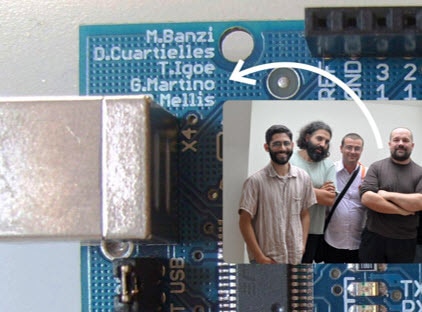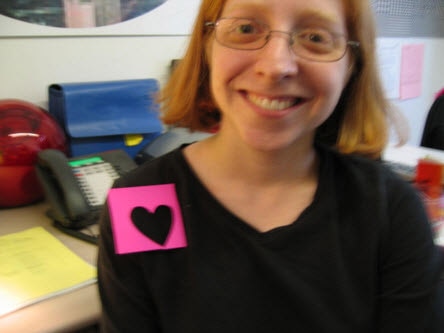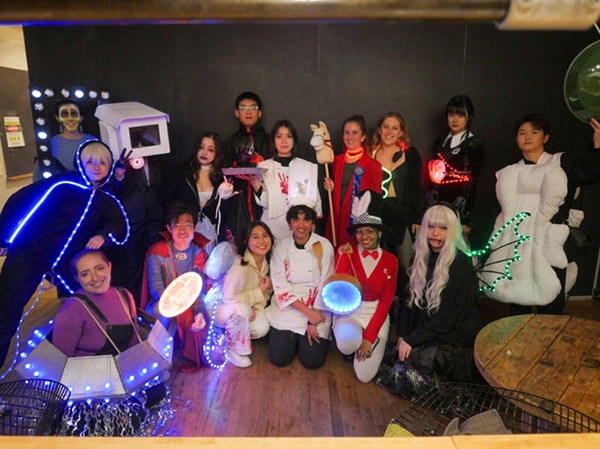制造商零件编号 A000073
ARDUINO UNO SMD R3 ATMEGA328
Arduino
In the early 2000s, students and professors at the Interaction Design Institute Ivrea in Italy developed a new microcontroller board for use specifically by artists and designers. They held workshops and seminars using the boards throughout different iterations, which were programmed using Wiring, a creative coding platform developed by Hernando Barragán. Wiring easily allowed creators to program microcontrollers by providing a supportive software environment, a bootloader for easily uploading programs to the board, and a comprehensive online reference including add-on libraries and forums.
Some other members of the Interaction Design Institute of Ivrea partnered with a manufacturer to develop a version of the hardware that used an Atmega8 microcontroller, and Arduino was born. The original Arduino team members’ names can be found on the Arduino NG board: Massimo Banzi, David Cuartielles, Tom Igoe, Gianluca Martino, and David Mellis.

There’s a full chronology of the board that became the Uno on the Arduino site.
Arduino offered a much more accessible toolchain for microcontroller programming than what was available at the time. Before Arduino, you would often need an expensive piece of proprietary hardware to program your bare chips, and the compiler software was also super expensive. By combining all the essential circuitry onto one board with a bootloader that connects easily to the free software, Arduino unlocked a previously untapped user base of artists interested in tinkering with tech but who didn’t have a background in electrical engineering.
The barrier to entry used to be several hundred dollars and some serious know-how, which you might need to get from an elite institution, and Arduino lowered it to $25 and a free download. No shade meant towards the BASIC Stamp or PIC chip folks, which have made their products easier to use and less expensive since.

I was in art school in 2005 when all this happened, so I feel like I saw Arduino’s influence blossom onto the art scene as it happened. We’re usually very technical in this series, so please allow me to round out the vibe with an art history lesson that will hopefully leave you inspired to make your next Arduino project extra special. And if you’re an artist or designer, I think it’s helpful and empowering to know that Arduino was created for you, first and foremost.
Now I’m an art school professor teaching product designers to create functional prototypes of their ideas using Arduino, and I can tell you from experience that unlocking basic microcontroller skills in an otherwise super creative person can lead to exciting and wonderful things.
Here are some examples.
Dan Rozin creates mechanical mirrors using interesting materials as the pixels, and Arduino to drive them. This is a type of kinetic sculpture.
Edith Kollath created these “breathing books” using LilyPad Arduinos, which are super flat. This is one of my favorite examples of how even the simplest code can produce the most poetic effect in the right context.
Rafael Lozano-Hemmer is another favorite contemporary artist who is famous for using Arduino in his work. You don’t always see it listed by name in the materials but referred to more generically as ‘control electronics’. That’s fair, it’s not like painters list the brand of paint they used underneath their artworks.
And every week on the DigiKey channel you can watch Maker Update, which often features new and inspiring artworks that rely on programmable microcontrollers and a bit of circuitry to express their creative vision.
It’s barely been 20 years and Arduino is already a pillar of interactive art and design education. The reason we see such a quick blossoming of electronic and interactive artworks using Arduino since its inception is because it’s open source. That means that all the IP, or intellectual property– the design of the circuit board, the software, the firmware, everything– is available to download and remix for free. Different mediums have different licenses that describe the ways folks can reuse the files, but the main idea is that the free sharing of these building blocks helps inspire innovation and self-directed learning.

We’re at the lucky point in history where it’s pretty easy to find cool interactive electronic art happening near you. Look for exhibitions at art and design programs, usually at the end of the fall semester in December and the end of the spring semester in May. If you’ve got a maker space nearby, folks there are probably clued in to the galleries in town that show this type of work and the email lists or social media accounts you might want to follow to keep up to date on events in your area.
If you’re interested in getting started using Arduino in your own art projects, you can watch this video series from the beginning and I’ll hold your hand while you learn everything you need to know. You might also seek out an in-person class at your local maker space. In my personal opinion, you should learn enough to take your breadboard circuits to a soldered version, so you can make robust and archival prototypes.
As creatives, I’ve seen a few common gotchas my students have had over the years, so here are some tips for success.
I hope this video helps motivate you to use Arduino in your art and design projects. If you’re ready to get started, watch my DigiKey video series from the beginning!